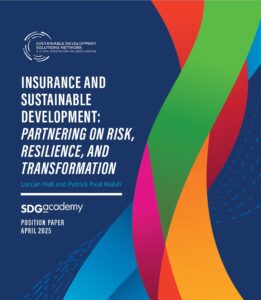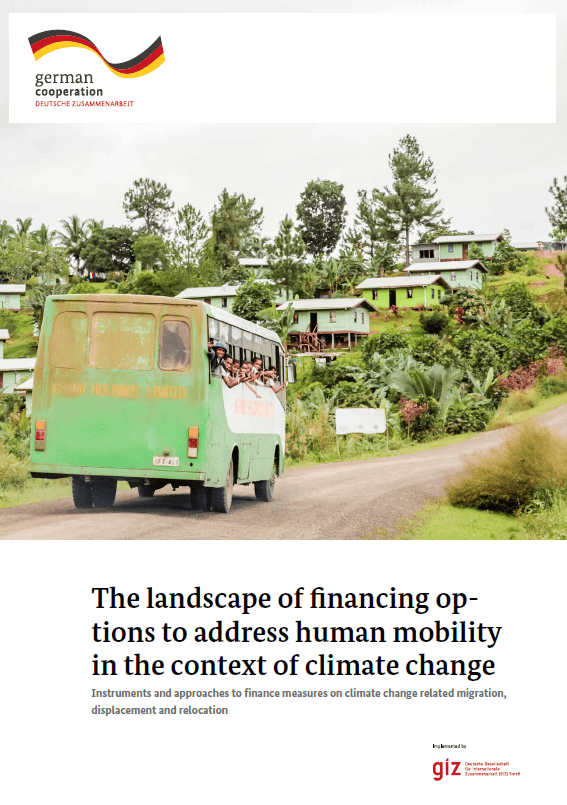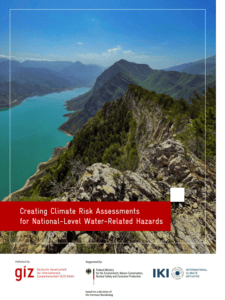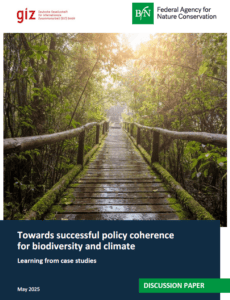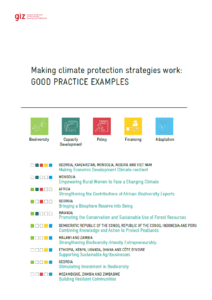Slow onset processes and extreme weather events related to global warming are driving human mobility in context of climate change (HMCCC). Due to related extremes and slowly evolving processes such as floods, droughts, and rising sea-level, increasingly more livelihoods are destroyed, homes become inhabitable and economic opportunities are mitigated, resulting in migration, displacement, and planned relocation. To reduce those adverse effects related to climate change, the implementation of timely and diversified financing is needed. Therefore, with a focus on developing countries, this study presents and reflects on different relevant finance sources and instruments in terms of their linkage to HMCCC, effect on climate risks, implementation timing, and gender aspects. 10 finance instruments and tools that address HMCCC have been selected with a non-exhaustive approach for analysis, coming from a range of international, public, and private sources. The selection covers insurances as risk pools or micro-insurance, loans as forecast-based financing and microcredits, as well as trust funds and grants e.g., the Climate Land Bank and the Relocation Fund. Additionally, the effect of the COVID-19 pandemic on financing flows and options for HMCCC has been considered in an exclusive chapter. The study closes with recommendations for different target groups, especially national governments, and donor organizations. A general recommendation that should be emphasized is that for a better risk portfolio, synergies between instruments need to be leveraged.
